8 Categories of Radiation Dosimeters for Dose and Exposure Monitoring and Worker Safety
Disclaimer:
Disclaimer: Reference on this page to any specific commercial product, process, service, manufacturer, or company does NOT constitute its endorsement or recommendation by the U.S. government or the U.S. Department of Health and Human Services or any of its agencies. Products are displayed as examples only. HHS is not responsible for the contents of any "off-site" Web page referenced on this site.
|
Dosimeter Equipment Category |
Description |
Advantages and Disadvantages |
|---|---|---|
|
Handheld survey meters Examples: 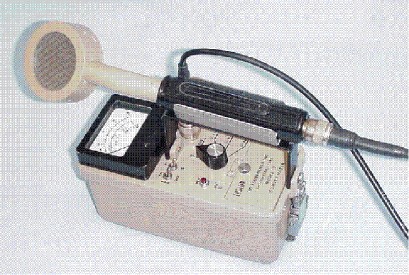
|
|
Advantages:
Limitations:
|
|
Personal dosimeter Examples: 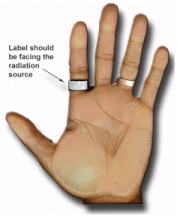 |
|
Advantages:
Limitations:
|
|
Pocket ionization chamber Examples: in photo below older versions on top, newer version on bottom of photo below 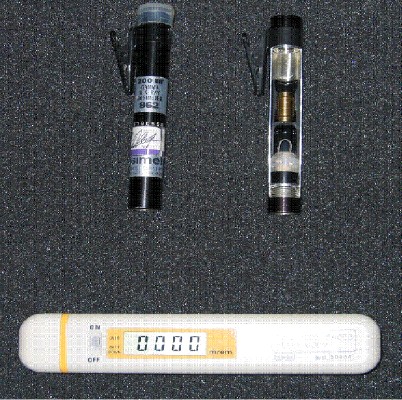
|
|
Advantages:
Limitations:
|
|
Electronic personal dosimeter (EPD) Examples: 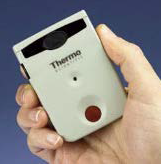
|
|
Advantages:
Limitations:
|
|
Personal emergency radiation detectors (PERDs) and monitors Examples: 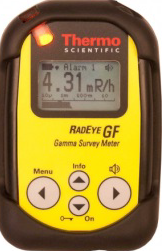
|
|
Advantages
Limitations
|
|
Non-alarming PERDs Examples: RadTriage50Sensor® formerly known as SIRAD® 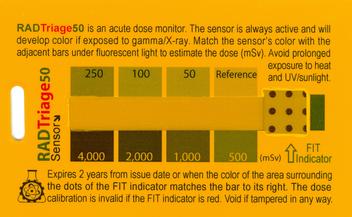 (card details) |
|
Advantages
Limitations
|
|
Personal radiation detectors (PRDs) Examples: 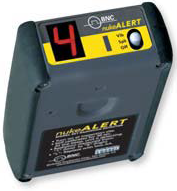
|
|
Advantages
Limitations
|
|
Extended range personal radiation detectors (ER-PRDs) Examples: 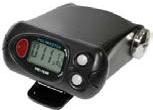
|
|
Advantages
Limitations
|
|
Radioisotope identification device (RIID) Examples: 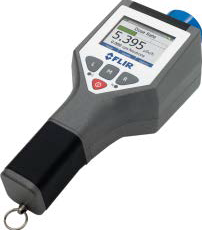
|
|
Advantages
Limitations
|
Source: Table above adapted from 2 documents:
- Guidance for Emergency Response Dosimetry (NCRP Report 179, Bethesda, MD, 2017. See table 4.2, pages 29-32)
- Preventive Rad/Nuc Detection Equipment Categorization for Consequence Management (LLNL-TR-731941, Feb 2016)
Abbreviations: R = roentgens; Gy = gray
; Sv = sieverts
TLD: thermo luminsecent dosimeter; OSL: optically stimulated
luminescence
ANSI Standard -
American National Standards Institute
Radiation emergency worker: those who would be called upon to assist with the response to a radiation incident even though their regular job does NOT expose them to levels of radiation higher than normal background radiation
Traditional radiation workers: those whose occupations involve exposure to radiation and who are part of an occupational radiation dose monitoring and protection program
Radiation Zones are defined by the measurement of R in air at the perimeter of a zone; it could be "hotter" inside the perimeter line. isodose maps are created, and they are similar to maps with isobars or isotherms. See REMM graphic. This graphic relates to fallout after an IND but these zones could be defined in other kinds of incidents.
Outdoor Radiation Zones as defined by NCRP: Dangerous Radiation Zone: >10 R/h (>0.1 Sv/h); Hot zone >10 mR/h (>0.1 mSv/h); Cold zone: < 10 mR/h (<0.1 mSv/h) beyond this perimeter. Other organizations have different names for these radiation zones, as noted on REMM:
- Radiation Control Zones and Perimeters Recommended by Various Agencies for Responding to Radiological Emergencies
- Damage Zones, Radiations Zones and Likely Rescue Activities After a Nuclear Detonation: Table
- Time Sequenced Size of Dangerous Fallout Zone and 0.01 R/Hour Boundary After a Hypothetical 10kT Nuclear Detonation at Ground Level

